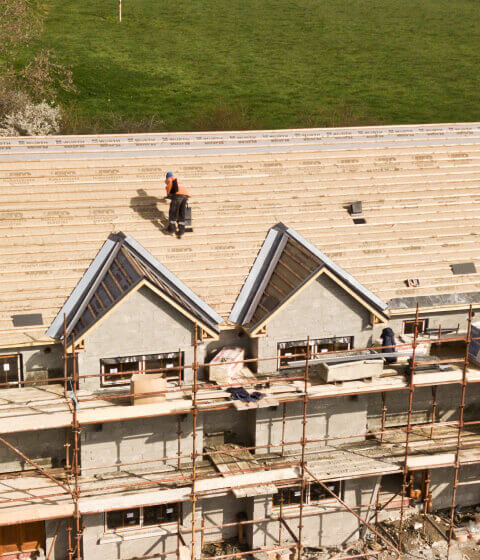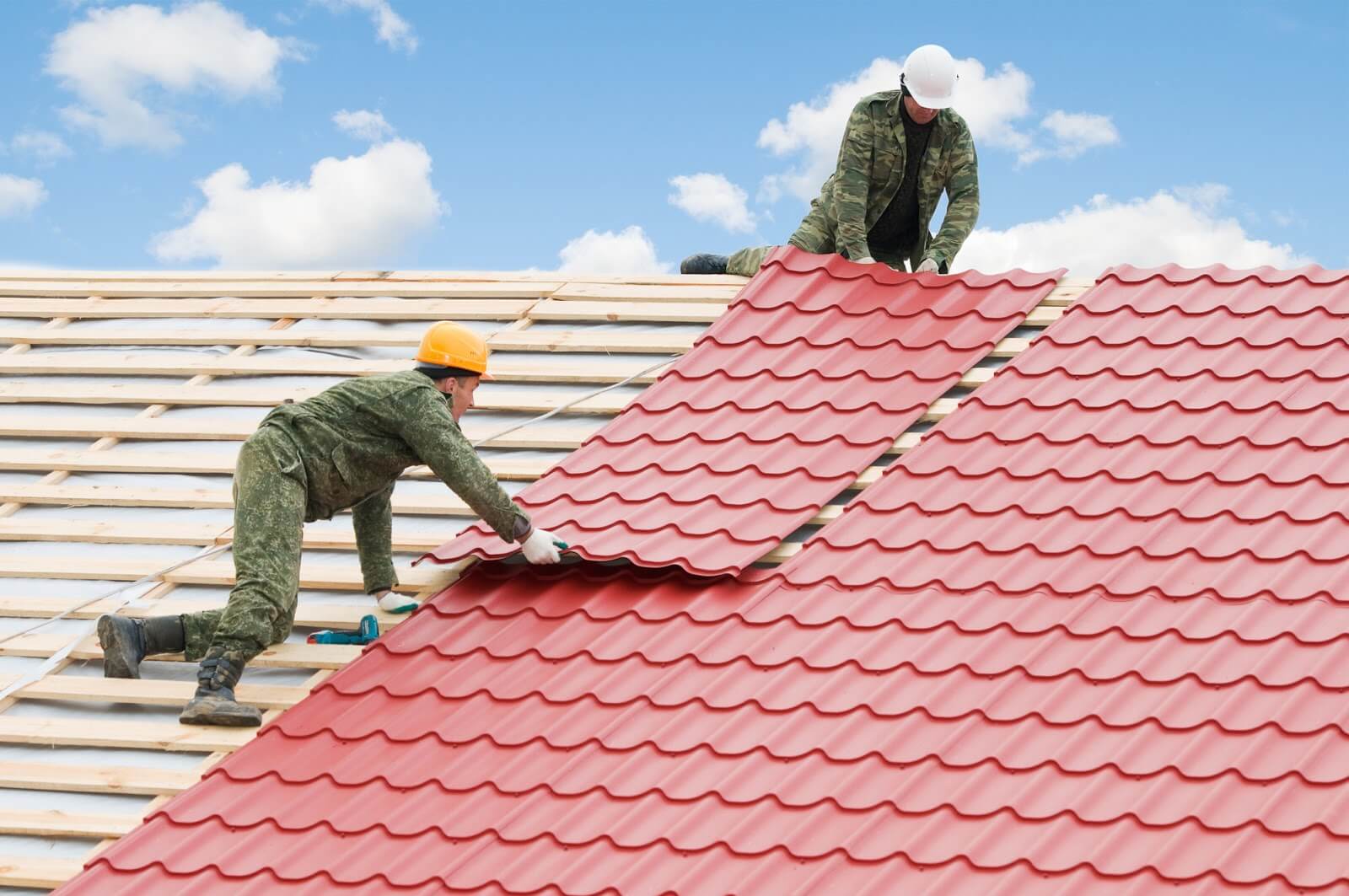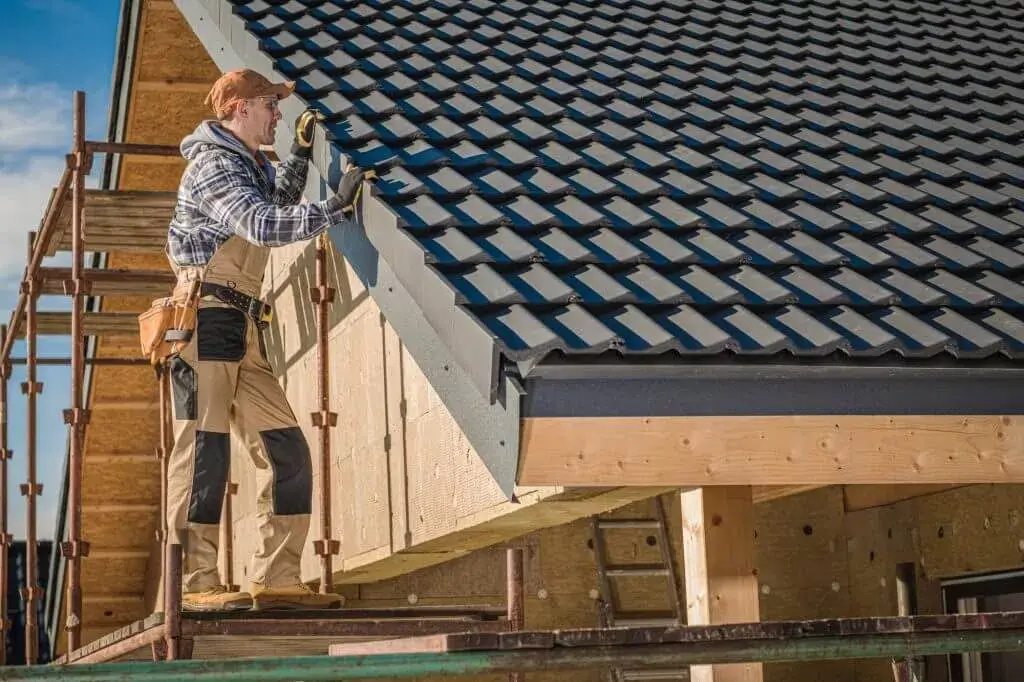As homes age, the construction, however, sturdy starts to give. While most aging comes in the form of aesthetics, something people can compromise on, others come in the form of wear and tear. Eventually, a house will end up needing a new roof altogether. People can tolerate cracked windows, but it’s another thing altogether trying to live with a leaky roof. So, if you’re living in Canada and wondering “how much does a new roof cost?” then wonder no more, we at Above it all Roofing have the answers for you.
Fiberglass Asphalt Shingles – $1.17 per square feet
Fiberglass Asphalt Shingles might qualify as the most affordable solution on the market. It is very versatile, quite light, and malleable (in the craftsperson’s hands) so it can be made into any shape and fit any form. As they are lightweight and save you money on installation, they usually last somewhere between 15 and 30 years, while totaling out at a light $1.17/ft2. However, there is always a tradeoff, Canadian winter is very trying as-is and fiberglass is not built for winters. Despite its marketed survival of 15 to 30 years, fiberglass asphalt might starts decaying earlier, in the form of warps, cracks, and chips. This can be managed through routine inspections though.
These are the most commonly found types of shingles, they are cheaper than regular asphalt, because they are lightweight, and save you money on installation. They are lighter because they contain less asphalt, and fiberglass is thin and light as it is. They offer another advantage over asphalt shingles in that they are more fire-resistant, more environmentally friendly, and don’t require you to increase the weight capacity of your house before installation.
Asphalt Roof Shingles – $5.88 per square feet
You might think that this is a bit of a jump in price for roofing for seemingly the same material. That would be an accurate assumption if not for the fact that Asphalt roof has a few hands up on Fiberglass roof, even if it comes at a steeper price. Asphalt shingles contain more asphalt than fiberglass and are thus more durable. Due to this excess durability, they are last longer, can withstand the weather for longer, even through severe storms without getting blown away, or damaged. It is better suited for colder climates than fiberglass asphalt.
The downside with this is that they weigh more, and you might need to reinforce the structure before installation. Also, as they are paper-based, organic asphalt is more susceptible to fires (definitely should not be installed in areas with a history of wildfires). Also, despite its name, it’s less environmentally friendly than fiberglass, as it contains more asphalt.
No matter what type of asphalt you get, expect it to have a life span between 15-30 years, after which you will need to start over.
Metallic Roofing
- High-End installation can cost around $14.70/ft2
- Low-end, you can expect to part with around $1.17/ft2
- The average cost hovers around $5.88/ft2
Metal roofs offer one immediate advantage over their asphalt counterpart, in that metal roofs are far more durable. They can last the entire lifespan of your home (assuming regular wear). Metal offers you a variety of choices, like galvanized steel, galvalume steel, or weathering steel, as well as aluminum, tin, copper, and zinc.
The types of metal roofs are:
- Vertical seam
- Pre-formed panels
- Granular coated panels
The style options allow you to mimic the look of shingles, slate, tile, shakes, or even vertical panels, or whatever else you prefer. Whenever you invest in a metal roof, make sure that it is tested, labeled, and listed with a testing organization, otherwise, you run the risk of the material not holding up for as long. It should be tested against rigorous winds, fire, and impact resistance as those three factors will be the most of what damages roofs to begin with. Also please keep in mind that installations are subject to your local codes and regulations.
Metal roofs have a lifespan of 40-70 years, depending on which material you get. This might be enough to last the average home’s lifespan. When installed right, metal roofs can sustain winds as strong as 140 miles/hour, they won’t easily corrode, crack, and even impact-resistance.
The biggest advantage of a metal roof is that it does not require periodic maintenance (that adds to the cost), any inspection you might want, you can do it yourself without having to hire any experts. Given that metal is naturally fireproof, it will not be susceptible to any fires. They are also 100% recyclable at the end of their life.
The biggest drawbacks of metal roofs start with the cost, as it is pretty costly, it also gets pretty noisy (as it is metal after all), and the worst culprit is that as the sun shines on a color, it starts fading away. You will be hard-pressed to match coloring if you need to switch any out. Lastly, it is metal, so rusting is always a real possibility.
Types of Metal Roofs
Corrugated Steel
This might be the most commonly used and cheapest material to install. The material is so thin, I can easily go over any existing roof, saving you a tonne of money in the long run.
Tin
Tin is lightweight and relatively cheap. However, it is resistant to corrosion and flexible, so it can be molded into any shape. The downside is that like all metals, it is going to noisy and will rust over time.
Aluminum
Aluminum is flexible and versatile. It can be bent into any shape you want. It is naturally reflective, so it will save you energy costs by not heating up as much in summers.
Copper
While ideal for conducting electricity, its malleable and flexible nature makes for dynamic roofing material. Its natural color also adds character to the house, as it starts off a typical copper, and starts turning light green over time (that’s what happened to the statue of liberty). It can be pretty expensive though.
Zinc
Zinc might be the only material in roofing that is self-healing and as such, it is weather-resistant and heals from scratches and scrapes over time.
Whatever type of roof you get, just make sure it compliments your home design.







